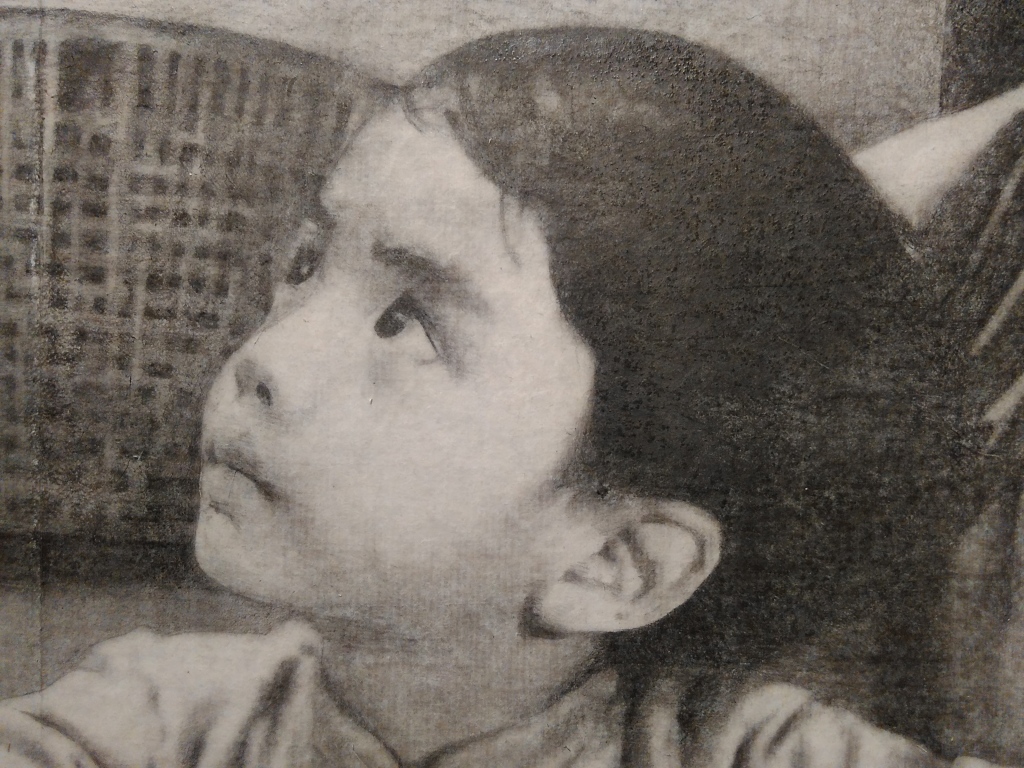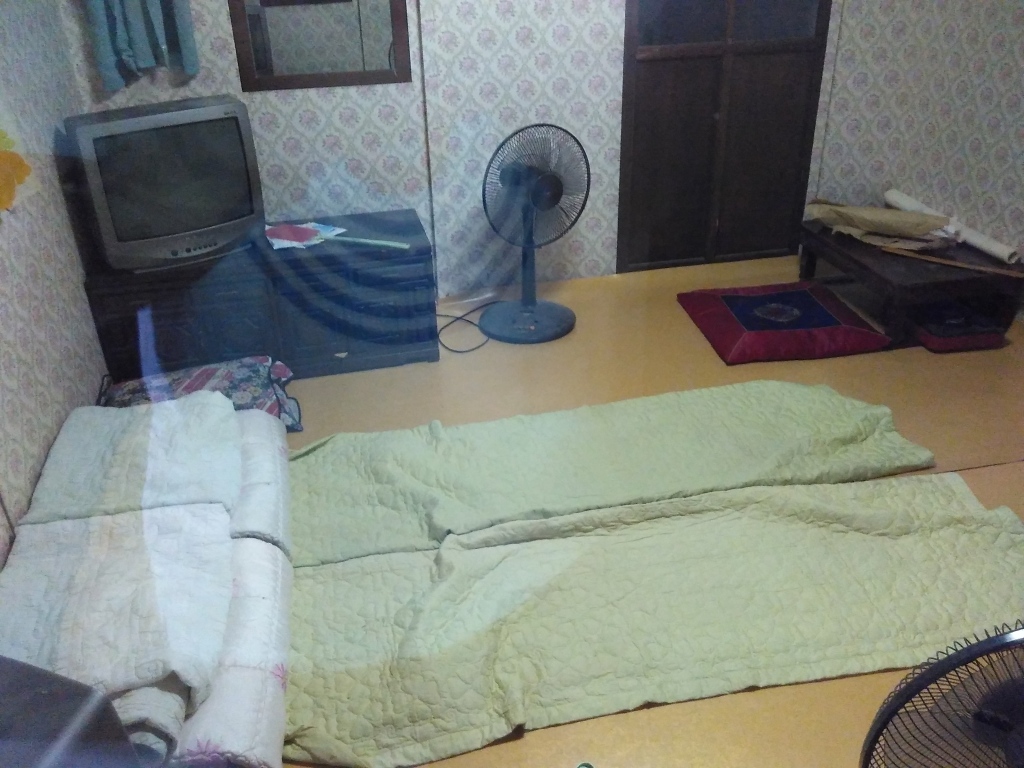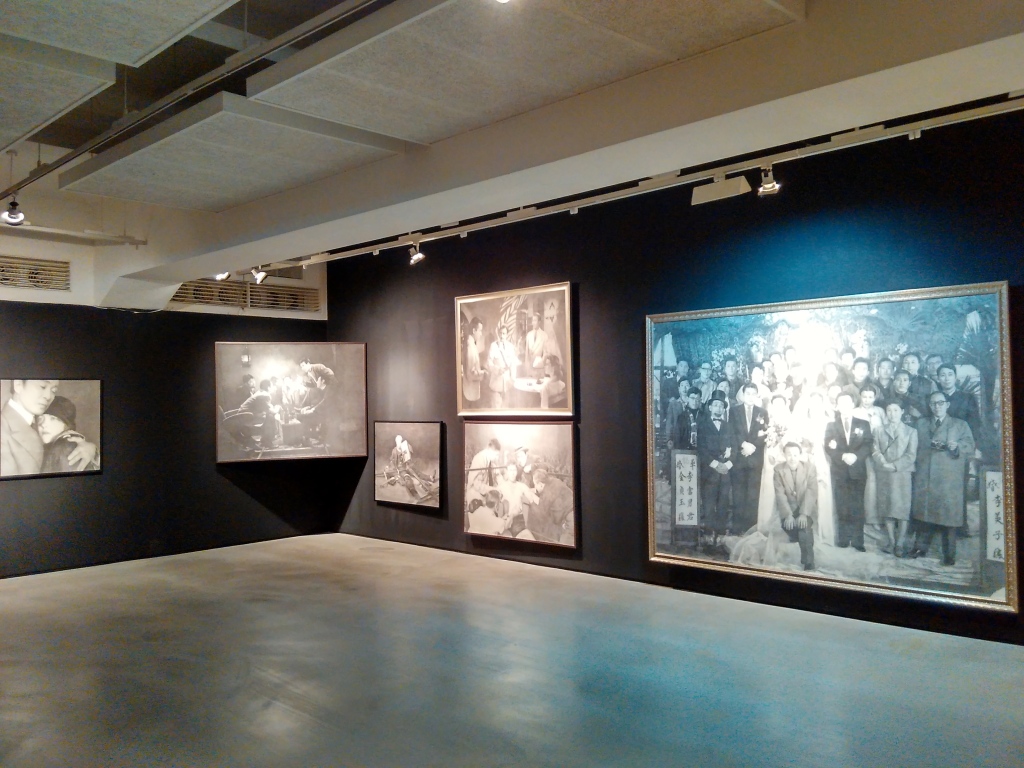Seoul, August 28 – October 25, 2015, http://ilmin.org/
 Cho Duck Hyun’s main skill is the ability to minutely copy photographs as graphite pencil drawings on large canvases covered with Korean mulberry paper. The photos are reproduced in black and white, and the originals are also usually black and white vintage photographs. This technique that produced beautiful detailed artworks is his trademark differentiation, similar to Yeesookyung’s broken-and-reassembled porcelain vessel sculptures, Sekyung Lee’s human-hair-on-porcelain-drawings or Osang Gwong’s photo-sculptures. In order to differentiate further, Cho Duck Hyun groups his oeuvre according to projects, sometimes theme-specific (e.g. drawings based on photographs of a writer in whose foundation museum the show takes place) or location specific (e.g. drawings based on photos from an archive of a photo studio in a Japanese town). Sometimes a performance aspect is incorporated as well, like the staging of a ‘fake’ excavation project.
Cho Duck Hyun’s main skill is the ability to minutely copy photographs as graphite pencil drawings on large canvases covered with Korean mulberry paper. The photos are reproduced in black and white, and the originals are also usually black and white vintage photographs. This technique that produced beautiful detailed artworks is his trademark differentiation, similar to Yeesookyung’s broken-and-reassembled porcelain vessel sculptures, Sekyung Lee’s human-hair-on-porcelain-drawings or Osang Gwong’s photo-sculptures. In order to differentiate further, Cho Duck Hyun groups his oeuvre according to projects, sometimes theme-specific (e.g. drawings based on photographs of a writer in whose foundation museum the show takes place) or location specific (e.g. drawings based on photos from an archive of a photo studio in a Japanese town). Sometimes a performance aspect is incorporated as well, like the staging of a ‘fake’ excavation project.
For the Ilmin solo, Cho came up with one new fictional storyline, presented on the ground floor of the museum: He tracked down two persons of the same name as him, one a failed actor living in the beginning of the 20th century, another Cho’s contemporary, also an actor. The storyline revolved around real and fictional photographs related to the life and locations of the deceased actor-Cho that lived about one hundred years ago. One video re-enacted the lonely death of deceased actor-Cho, by the peer of artist-Cho, the living actor-Cho. An elaborate installation, featuring a reconstruction of deceased actor-Cho’s living room, and the whole house in which it was located, served as a setting for the old photographs-turned-paintings, depicting motives from old Hollywood and Shanghai movies (deceased actor-Cho spend a part of his life in China).
The story seemed to be quite random, as finding someone with the same name commonplace. I suspect a similar relationship between the story-concept and actual works-drawings in the other cases (displayed on the first floor): The stories mainly served as a conceptual frame to present a series of works, which would come across as slightly boring if they were only hung next to each other on a wall.
The first floor displayed a ‘retrospective’ of previous projects, each placed inside of a large black ‘storage container’. Some of the containers were opened and revealed the stacked drawings, while others remained closed, leaving only small crevices offering a peek inside, a bit like trying to peek inside your neighbor’s locked cellar or attic storage space.
The second “grand finale” floor was completely different, and as such quite surprising. Cho left his drawing skill behind, and instead used the whole floor to present one large three-screen light and shadow installation spanning the room diagonally. The room was divided by a white translucent screen, objects (plants) were placed behind the screen and illuminated from the back, creating a shadow image on the screen which looked like an Asian ink painting. According to the description, the work was inspired by Isang Yun’s music (a South Korean composer that has been too friendly with North Korea and had to spend his life in German exile for that reason) and Yun’s music also provided the soundtrack to the shadow image, which was static, except for the shivering of plant leaves in the air.
On two lower floors (the Ilmin-specific installation project and the storage box retrospective), the main ‘product’ of Cho’s art practice – the graphite pencil on mulberry paper photo reproductions – were so prominently present that the installation looked too much like a packaging, a merchandise display design that was only secondary to the existence of the drawings themselves. Only on the uppermost floor this feeling disappeared in the light and shadow installation. This was thanks to the fact that, finally, the drawings-as-objects have been left behind, and instead the lifelong expertise of drawing has been transformed into a completely different, and even stronger form of artistic expression.
P.S.: Unfortunately photos only cover the ground floor, then my phone run out of power.

